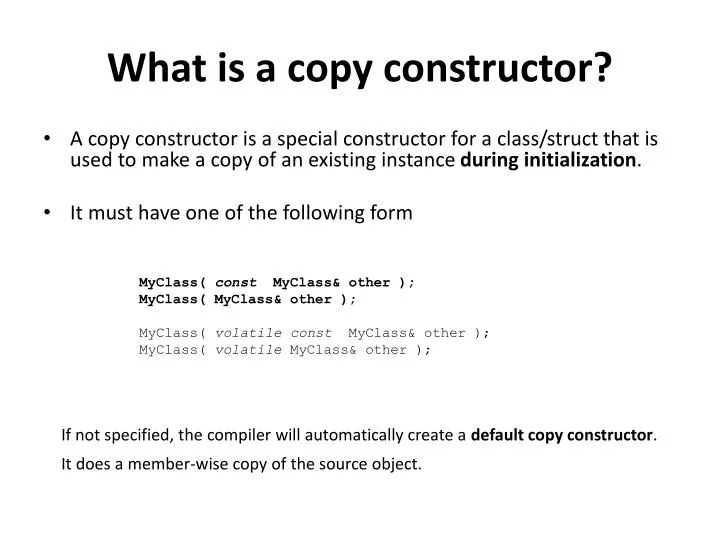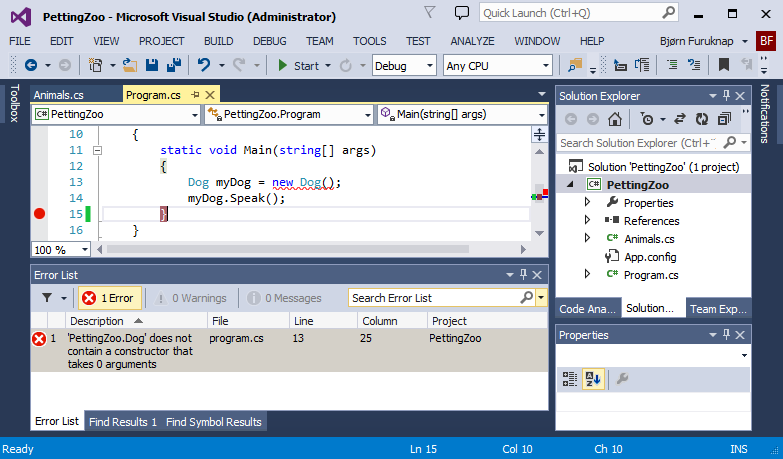
Modify how the default values are populated for the ExampleStruct() constructor.Īlso, I am aware that I could use a field like this instead of my Value property: public readonly int Value īut my philosophy is to use fields privately unless they are const or static. Call the ExampleStruct(int value = 1) constructor. So, as it stands right now, the default constructor actually created an object that is invalid in the context I need it for.

Throw new ArgumentException("Value is out of range") Add this to the ExampleStruct(int value = 1) constructor above: if(value 3)
STRUCT CONSTRUCTOR CODE
To make matters worse, my actual code is checking to see that int value = 1 parameter is within a valid range within the constructor. Since it does that, it uses int's default value of 0 as Value. So, like how I'm calling this() my explicit constructor, in Main, that same thing occurs where new ExampleStruct() is actually calling ExampleStruct() but not calling ExampleStruct(int value = 1). The reason is that all structs have public parameter-less constructors. This code outputs 0 and does not output 1. The problem is when I try to use this constructor without specifying a value and desiring to use the defaulted value of 1 for the parameter: private static void Main(string args)ĮxampleStruct example1 = new ExampleStruct() Here is an example: public struct ExampleStruct public class Child : Personįor more information and examples, see Static Constructors.I ran into this issue today when creating a struct to hold a bunch of data. You can also define a static constructor with an expression body definition, as the following example shows. Remaining implementation of Child class. Public Child(string lastName, string firstName) : base(lastName, firstName) The following example uses a static constructor to initialize a static field. If you don't provide a static constructor to initialize static fields, the C# compiler initializes static fields to their default value as listed in the Default values of C# types article. A class or struct can also have a static constructor, which initializes static members of the type. The previous examples have all shown instance constructors, which create a new object. Public Location(string name) => Name = name The expression body definition assigns the argument to the locationName field. The following example defines a Location class whose constructor has a single string parameter named name. If a constructor can be implemented as a single statement, you can use an expression body definition. Remaining implementation of Person class. Public Person(string lastName, string firstName) The following example shows the constructor for a class named Person. Its method signature includes only an optional access modifier, the method name and its parameter list it does not include a return type. Constructor syntaxĪ constructor is a method whose name is the same as the name of its type. If the static constructor hasn't run, the static constructor runs before any of the instance constructor actions take place. If a new instance of a struct is set to its default value, all instance fields are set to 0. The preceding actions take place when a new instance is initialized. Object initializers run in the textual order. If the expression includes any object initializers, those run after the instance constructor runs. The instance constructor for the type runs. Any instance constructors, starting with Object.Object through each base class to the direct base class.


Field initializers starting with the direct base through each base type to System.Object. The field initializers in the most derived type run. Those actions take place in the following order:

There are several actions that are part of initializing a new instance. For more information and examples, see Instance constructors and Using constructors. Constructors enable the programmer to set default values, limit instantiation, and write code that is flexible and easy to read. A class or struct may have multiple constructors that take different arguments. Whenever an instance of a class or a struct is created, its constructor is called.


 0 kommentar(er)
0 kommentar(er)
